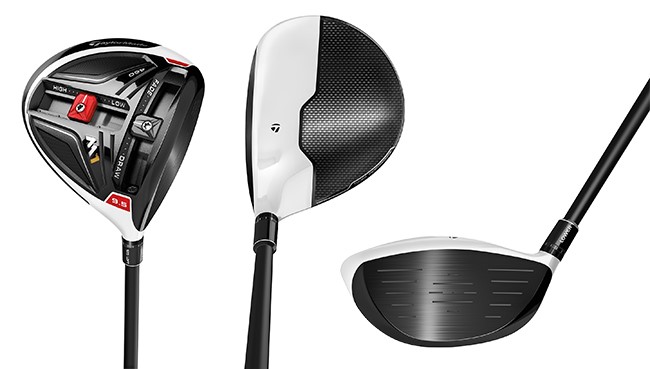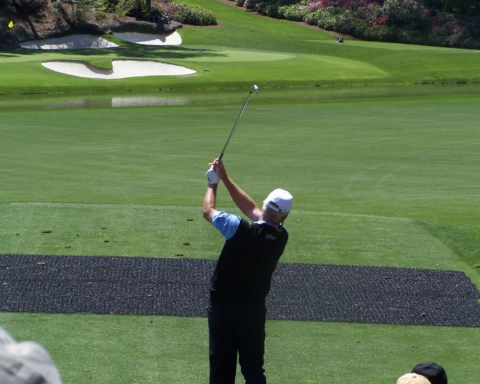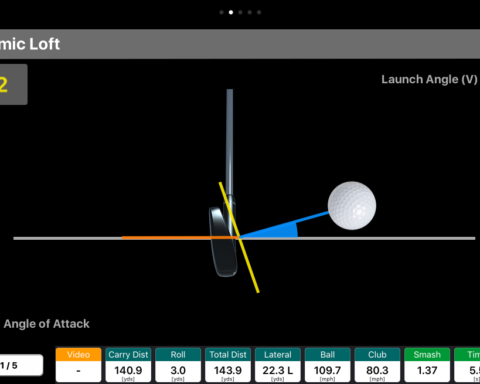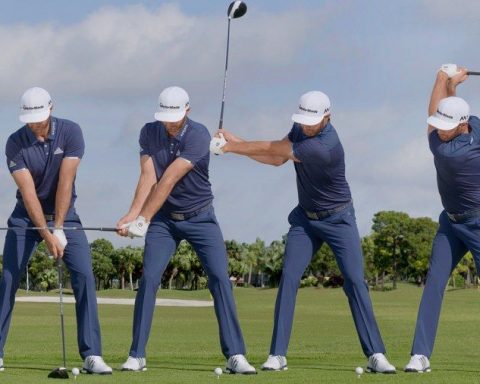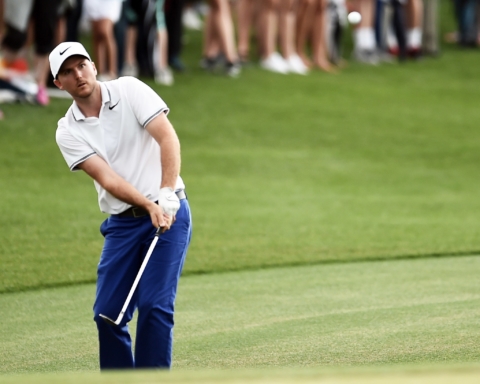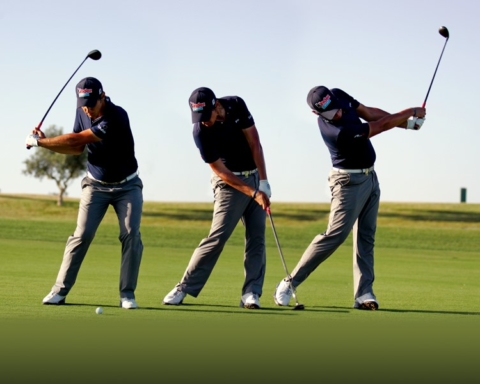Conditioning the body is the first and most important step anyone should take to improve their golf game. But where do you start? We have all been to a swing instructor that told us of one swing fault or another that we possess and has even given us practice drills and swing tips that would help to fix them. Like I talked about in my past post, the truth is 9 out of 10 times those faults are likely to return if the body continues to have the same physical limitation that caused them in the first place.
There is a large number of swing faults associated with a golfers swing. There are many different names for them, and one can cause another. The primary reason we have swing faults is that the body is physically unable to either get in a certain position or go through the range of motion you necessary to make a good swing.
1) POSTURE
Proper posture at set up is the first step to a more consistent, powerful swing every time. Poor posture can lead to almost every swing fault, which is why a good setup position is so important. There are 2 main types of poor posture the first is the S-Posture. The other type is the C-Posture. Let’s examine each of these and see how they affect the golf swing.
S-Posture
S-Posture can be caused by creating too much arch in the lower back by pushing the but too far back in the setup position. This puts a lot of stress on the muscles in the lower back, and causes the abdominal muscles to relax.
The primary reason for the S-Posture is a series of muscle imbalances. This is a combination of tight hip flexors (the muscle group in the front of the hip) and a tight lower back, along with weak abdominal and glut (the muscles in the butt) muscles.
To eliminate the S-Posture you must get more mobility in the lower back and hip flexors, and strengthen the abdominal and glute muscles. In our everyday life, the glute muscles become weak and under used while the hip flexors become tight and overused from sitting for long periods of time and walking without stretching. This requires the hip flexor muscles to constantly be flexed or contracted, which basically shuts off or disengages the glute muscles, and in turn causes the abdominal to protrude and puts additional stress on the lower back.
Exercises to eliminate the S-Posture
Cats & Dogs
- Start on all fours with your thighs and arms perpendicular to the floor.
- Without bending your elbows, try to lower (sway back) your spine creating the dog position and then lift or arch your spine up creating the cat position.
- Repeat this back and forth and then find the neutral position.
- Hold the neutral position with an abdominal brace for two breathes and repeat 1 min.
Reverse Crunches
- Start by lying on your back with your knees bent and holding a club up vertical with both hands.
- Without moving your hands or the club, try to bring your feet up under the club
- This will force you to posterior tilt your pelvis and work the lower abdominal
- Repeat until you feel a good burn in the abdominal
Bridges
- Lie down on your back with your knees bent and your feet flat on the floor.
- Cross your arms over your chest and lift you pelvis off the ground.
- You should feel the contraction in your glutes and try to minimize hamstring contractions
- Hold this position for 10 seconds and repeat 10 times.
C-Posture
C-Posture is described as a posture that occurs when the shoulders are slumped forward at address and causes a definitive roundness to your back from your tail bone to the back of your neck. This fault will make it difficult to maintain posture in the back swing
The primary reason for this swing fault is a series of muscle imbalances, including tight chest muscles, trapezium (the muscles in the upper back), and the lats (large muscles in the wide part of the back) accompanied by weak neck flexors and lower trapezium (muscles in the mid upper back). The only way to correct this posture for good is to address these limitations in the gym.
Seated Rows
- Start by sitting on top of a Swiss ball holding the handles of a cable machine or exercise band with each hand.
- Pull the weight back and up past your body while stabilizing your core and lower body.
- Concentrate on squeezing the shoulder blades together, and sticking the chest out.
- Hold each contraction for 2 breathes and repeat 12 times.
Doorway Stretch
- Stand in a doorway and place your forearms on each side of the wall.
- Step forward until a big stretch is felt in the armpit area
- Hold for 30 seconds & repeat 3 times
Neck Tucks
- Tuck your chin down to your chest area and gently pull down on your head with both hands
- Hold for 30 seconds and repeat 3 times
Mike Hansen




